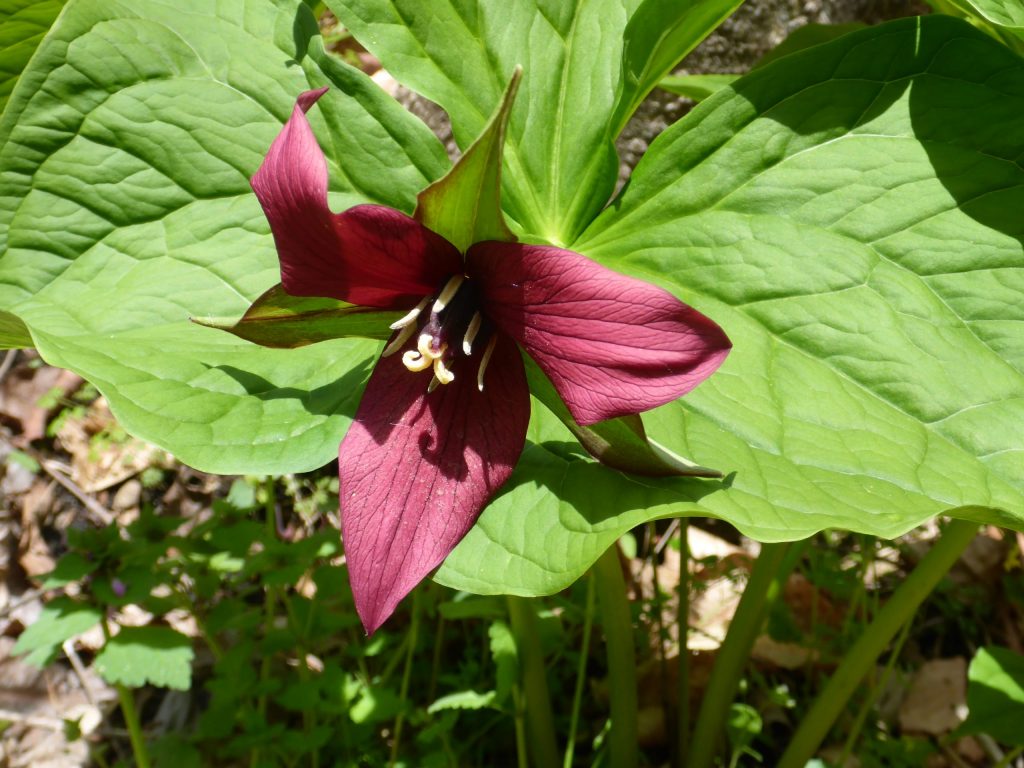Danielle has done a great job over the last few weeks giving us a blogs-eye view of Veg Crew activities – fences, soil samples, plant ID, plant measurement. There has also been rain, bullies, and exploding caterpillars! It’s all part of a day-in-the-life of a vegetation survey field technician.
But why? As a Ph.D. candidate, this project is Danielle’s life. So she decided to explain the meaning of life…at least hers right now.
Pennsylvania forests are complicated, ever-changing places. Some changes are temporary, such as the loss of migratory birds in the fall. Others are more permanent, like the introduction of disease or insects that shape what trees we see today. Even within seasons, small changes in rainfall or temperature can affect what plants and animals reside in an area. Then, of course, the animals can affect the plants, animals can affect other animals, plants can affect other plants, fungi can affect the plants, microbes can affect the fungi, and well… the list goes on and on. The forest is one big, complicated, interconnected system that has many moving parts.
Deer are a well-studied, integral part of this system. A quick Google search of “white-tailed deer research in Pennsylvania” yields more than 2 million results in a little more than a half-second. Everything from deer movements to habitat management tops the list (including this blog!), providing a wealth of information at your fingertips.
Now, you’re armed to the teeth with information. You know forests are complicated. You know deer are an important, well-studied part of the forest. You pause, take a moment to think, and… Eureka! It comes to you…
All this information, but how do deer interact with these other parts of the forest?!
This is an excellent question, and it is exactly what we’re studying. We know deer aren’t the only moving part to the forest, and other factors like soil conditions and competing vegetation also play a role. Not only are we interested in each of these factors separately (deer, soil conditions, and competing vegetation), but we also want to know how these factors interact with one another to shape forest conditions.
What do I mean by interact?
In this case, an interaction is defined as two or more objects having an effect on one another. A site with poor soil conditions may have lots of competing vegetation preventing the establishment of tree regeneration simply because the competing vegetation is better equipped to grow there. If we applied herbicide to remove the competing vegetation but didn’t change the soil conditions, the competing vegetation would return over time. However, if we changed the soil conditions in addition to removing the competing vegetation we would have a better chance of getting the result we wanted.
This is where my research comes in. I’m interested in how certain treatments (lime—to improve soil conditions, herbicide—to remove competing vegetation, and fencing—to remove the effects of deer) interact to influence what plants grow in an area. I’m monitoring 24 different sites with every possible treatment combination (including lime, fence, and herbicide alone) to see what happens over time.



The three treatments that have been applied are fencing (left), lime (middle), and herbicide (right) to understand how deer, soil conditions, and competing vegetation interact to shape forest plant communities.
In the coming year I will be sharing my results as I wrap up my final year at Penn State. Over the last 3 years I’ve spent nearly 9 months doing field work working tirelessly with so many other hard-working and dedicated people to apply these treatments and monitor over 250 subplots of vegetation at my 24 sites. This has yielded an enormous amount of data which takes considerable time to process and organize.
In the meantime, I would like to extend a thank you to everyone who has worked with us, and thank the readers of the blog for your continued investment in the Deer-Forest Study. I promise the results will be worth your wait!
Ph.D. graduate student
Subscribe to the Deer-Forest Blog by email
And Follow us on Twitter @WTDresearch
